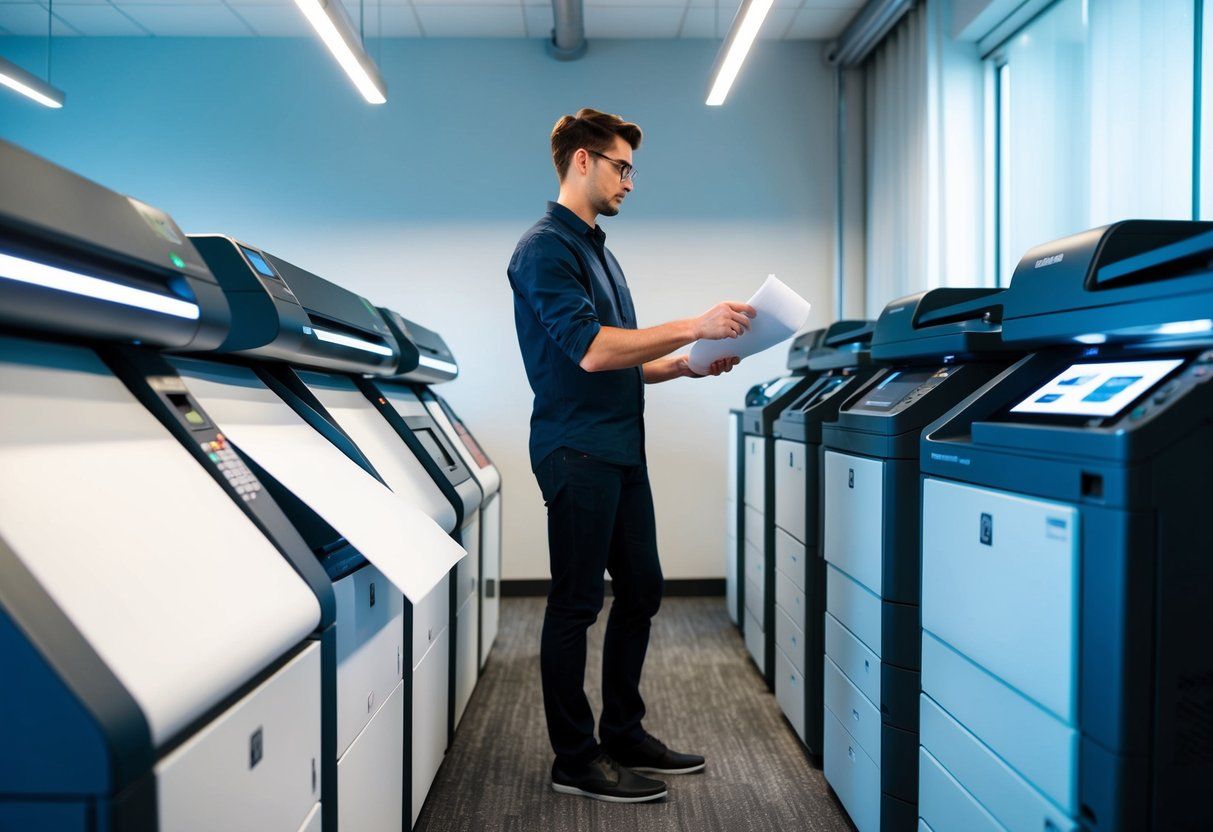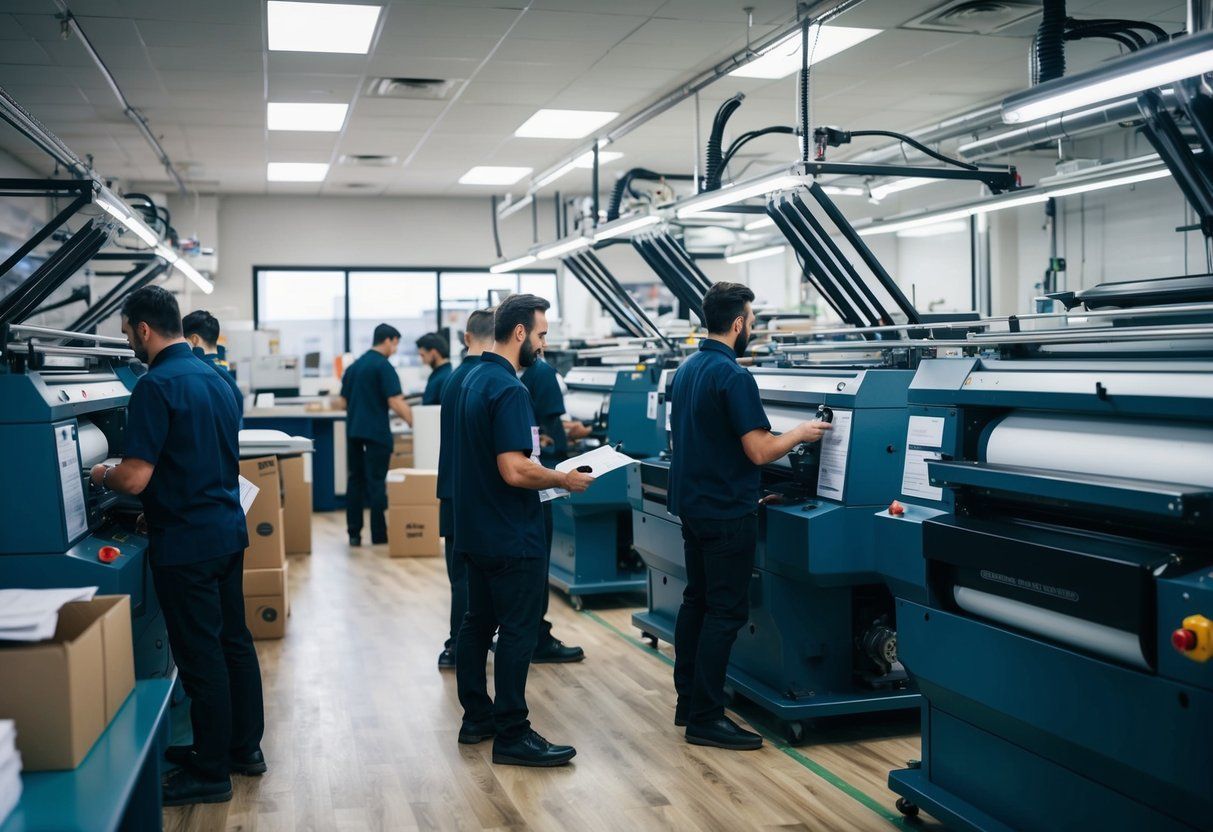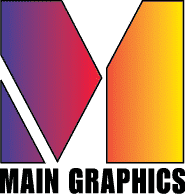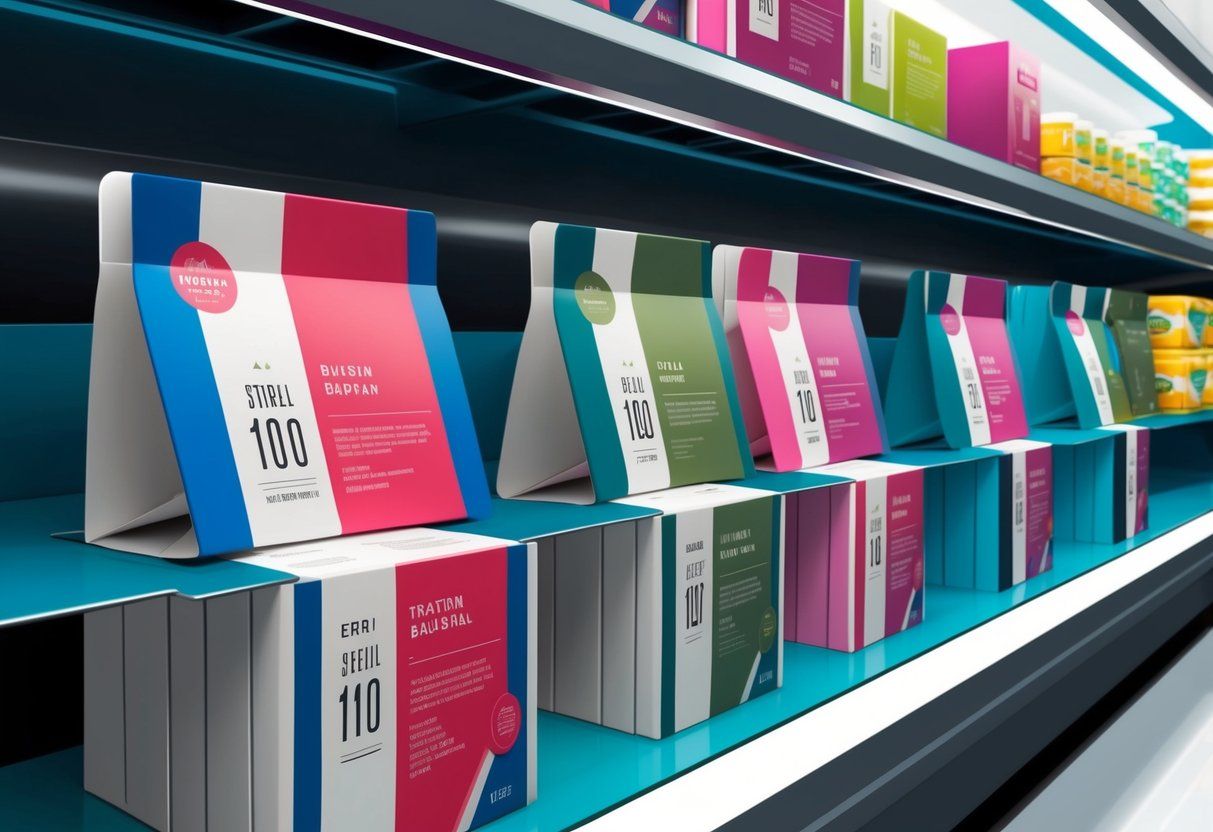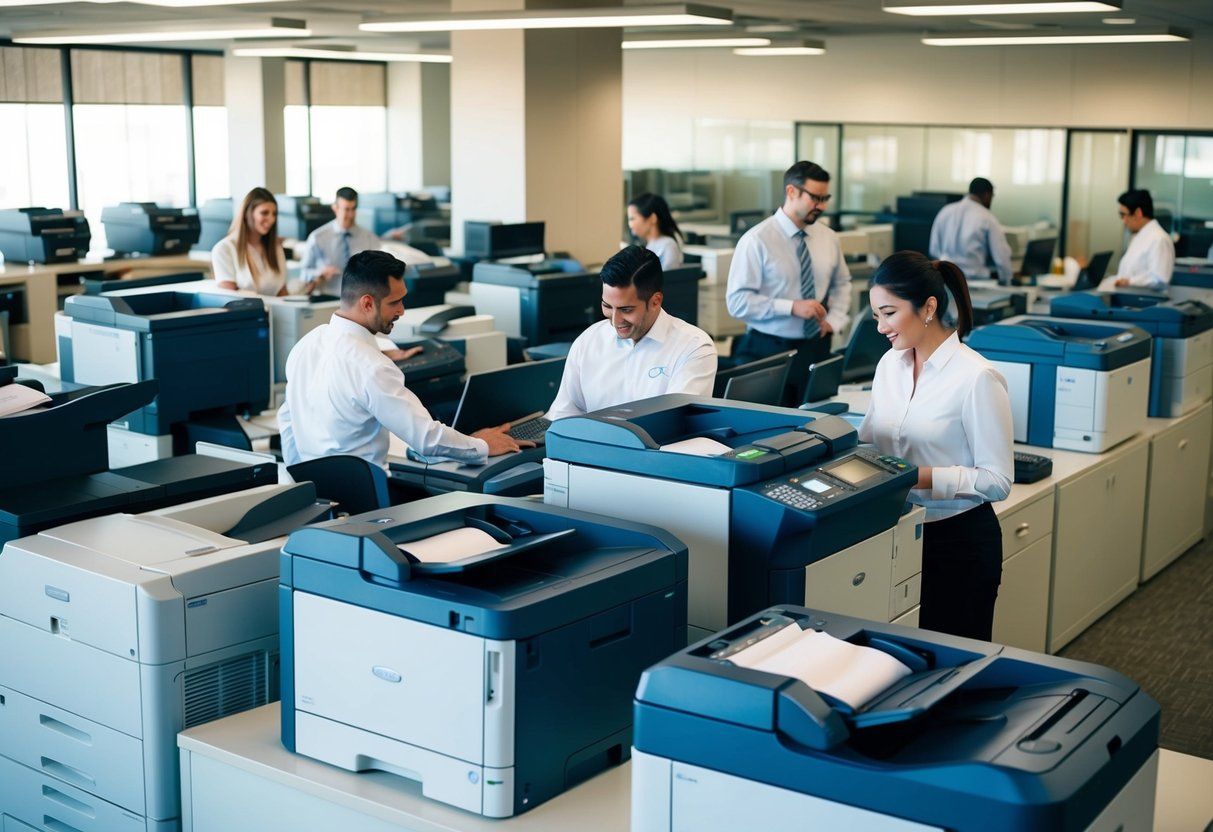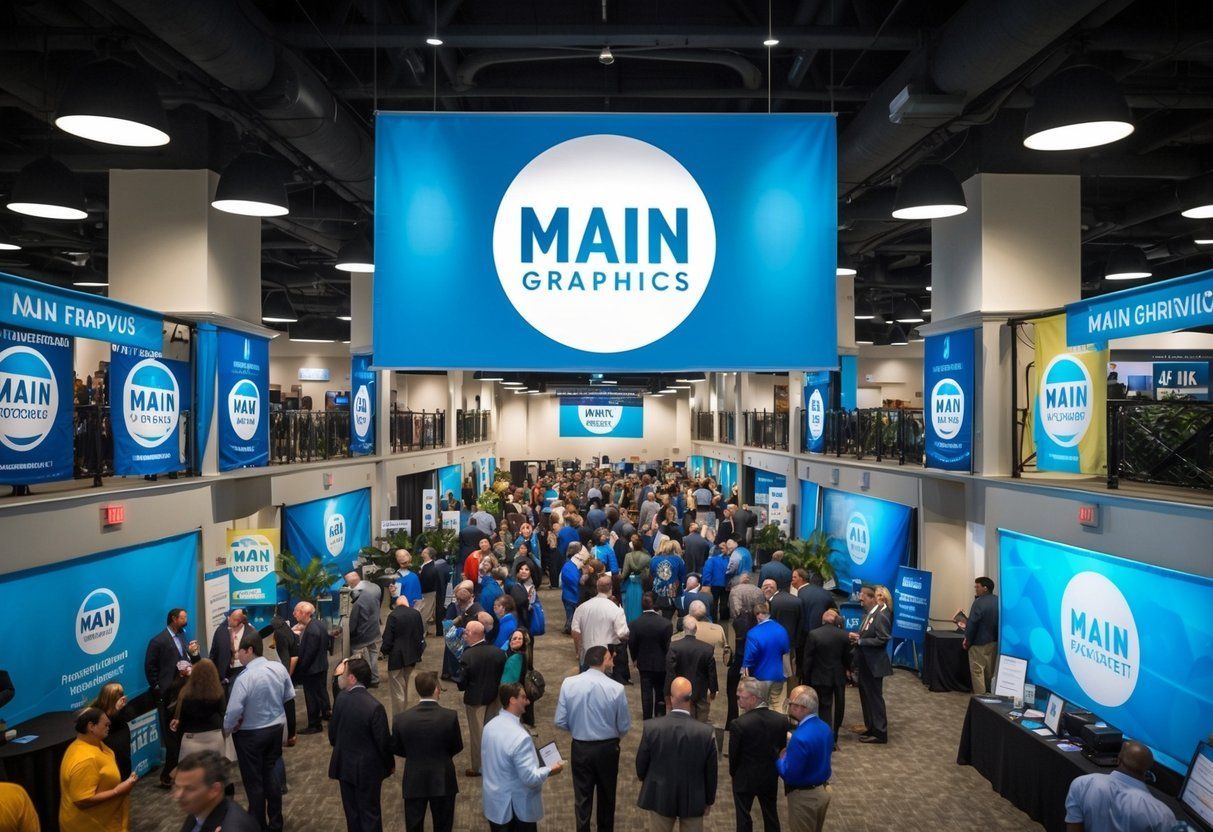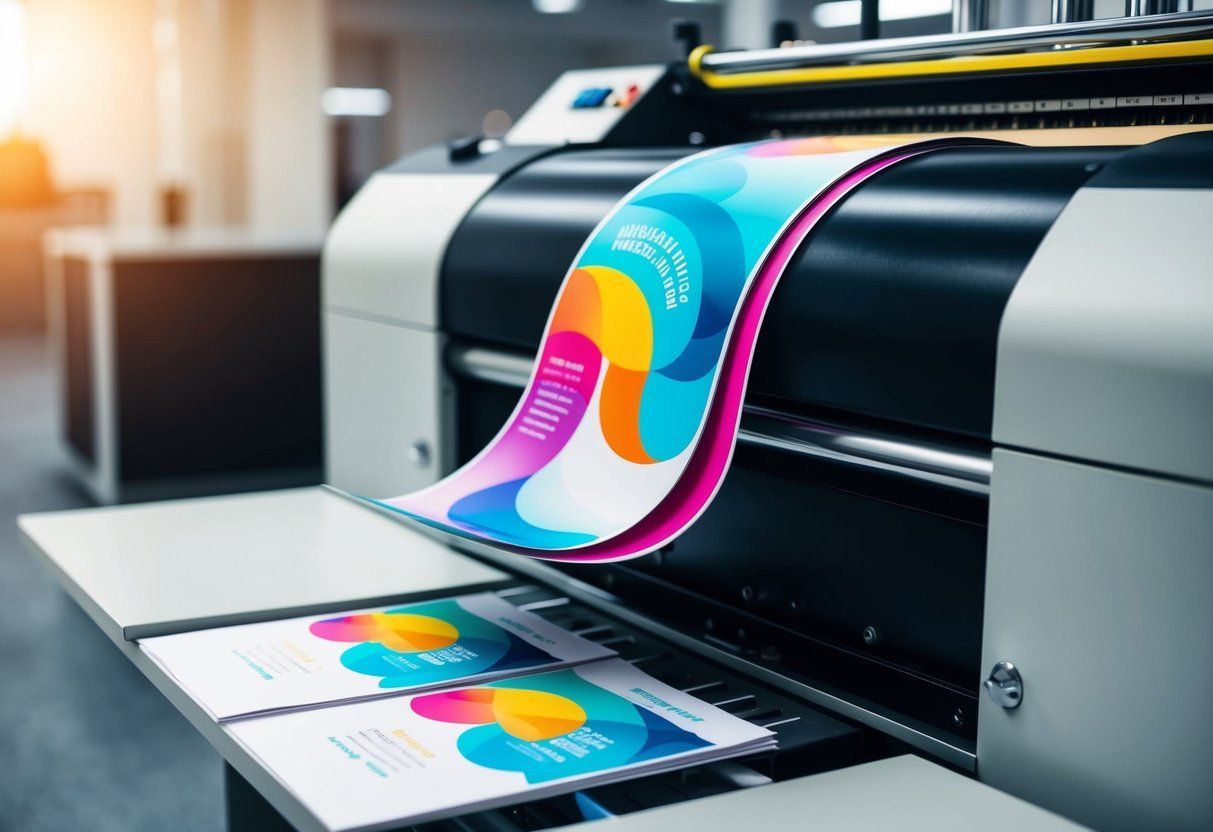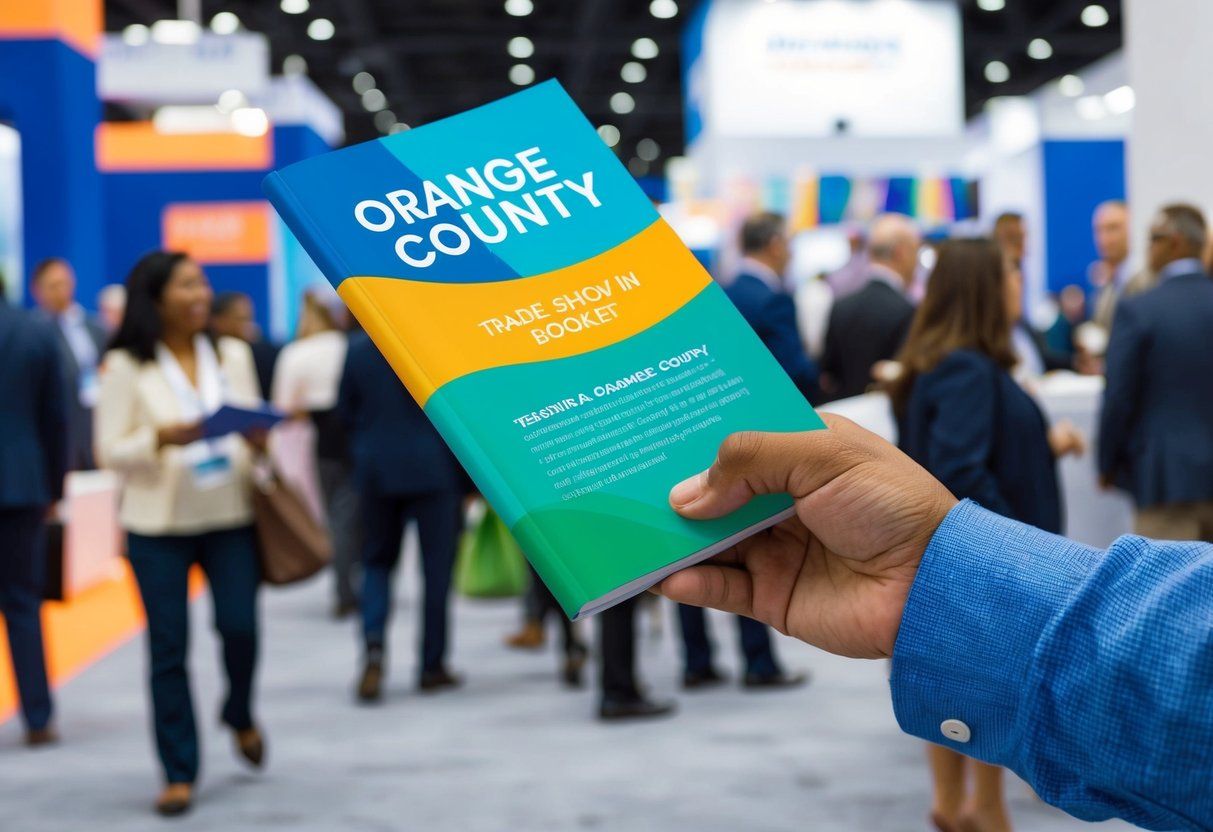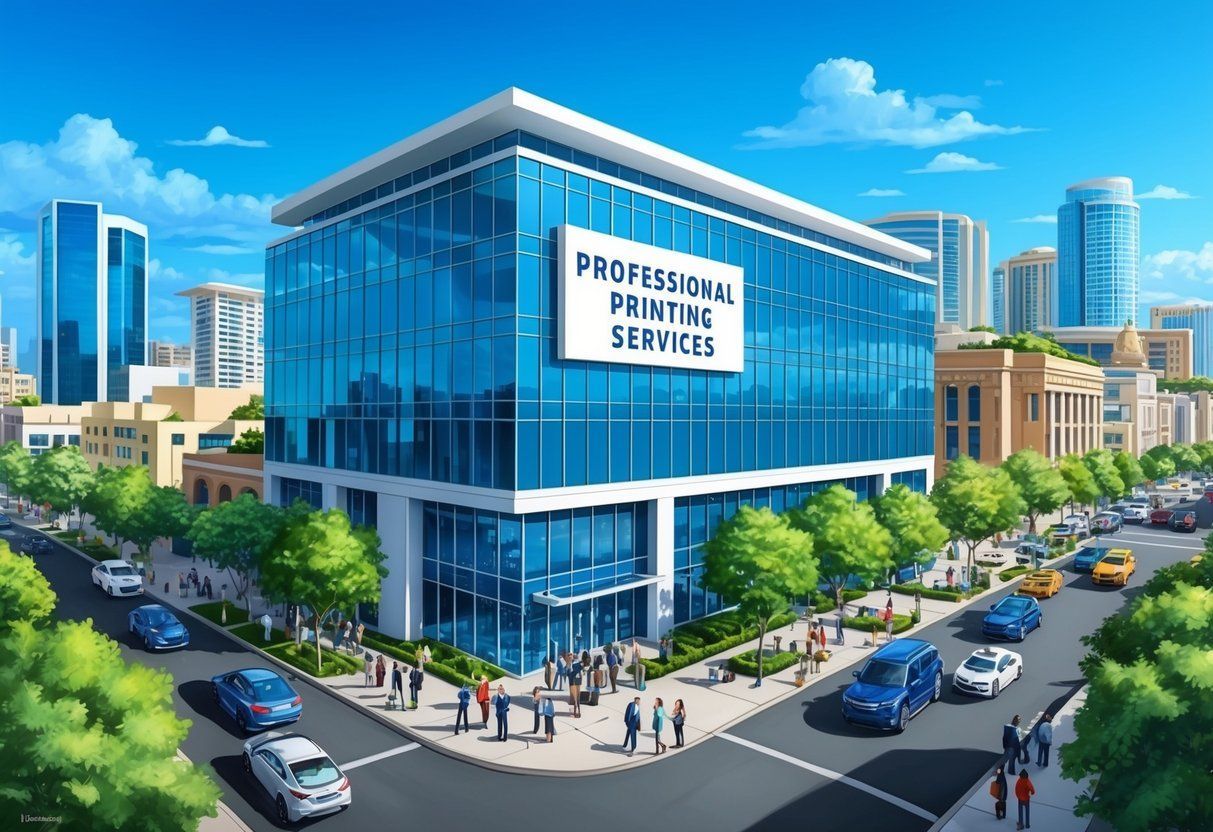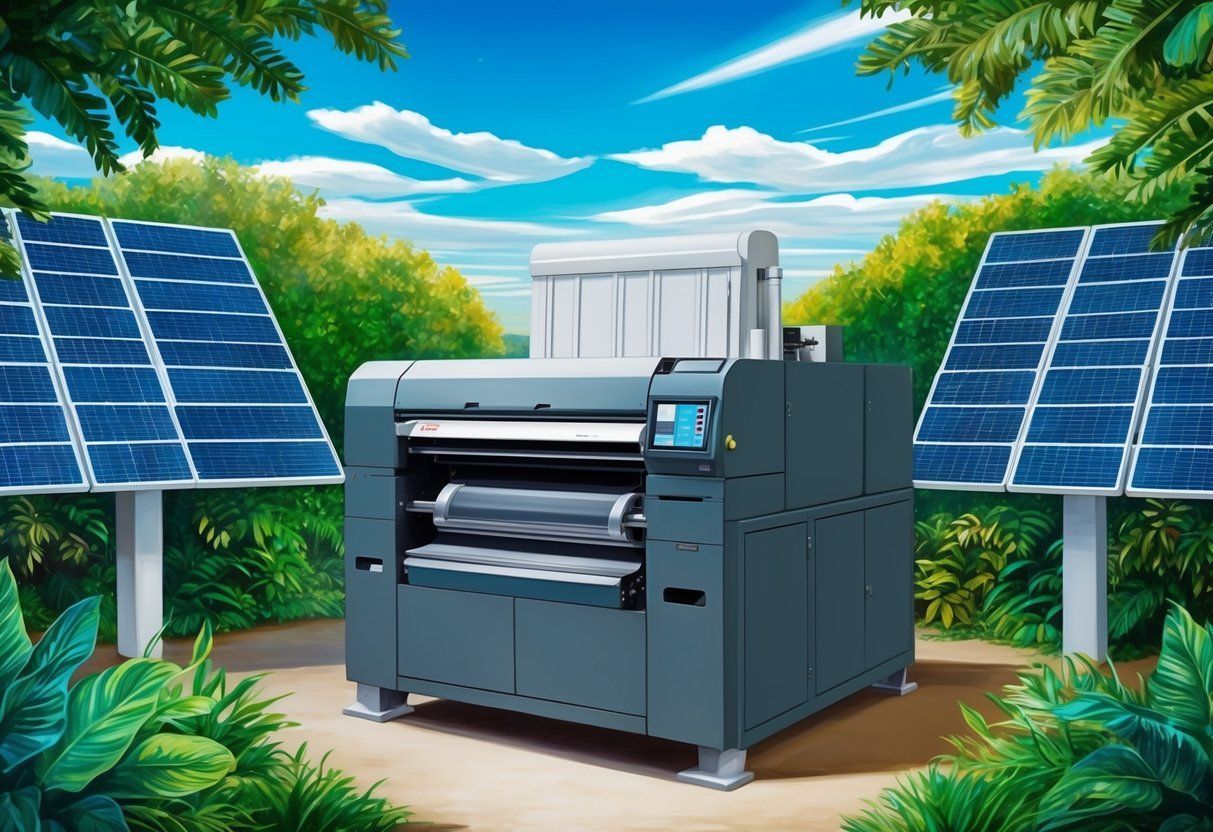Maximizing Event Exposure with Eye-Catching Banners and Signage: Tips and Tricks
Maximizing Event Exposure with Eye-Catching Banners and Signage
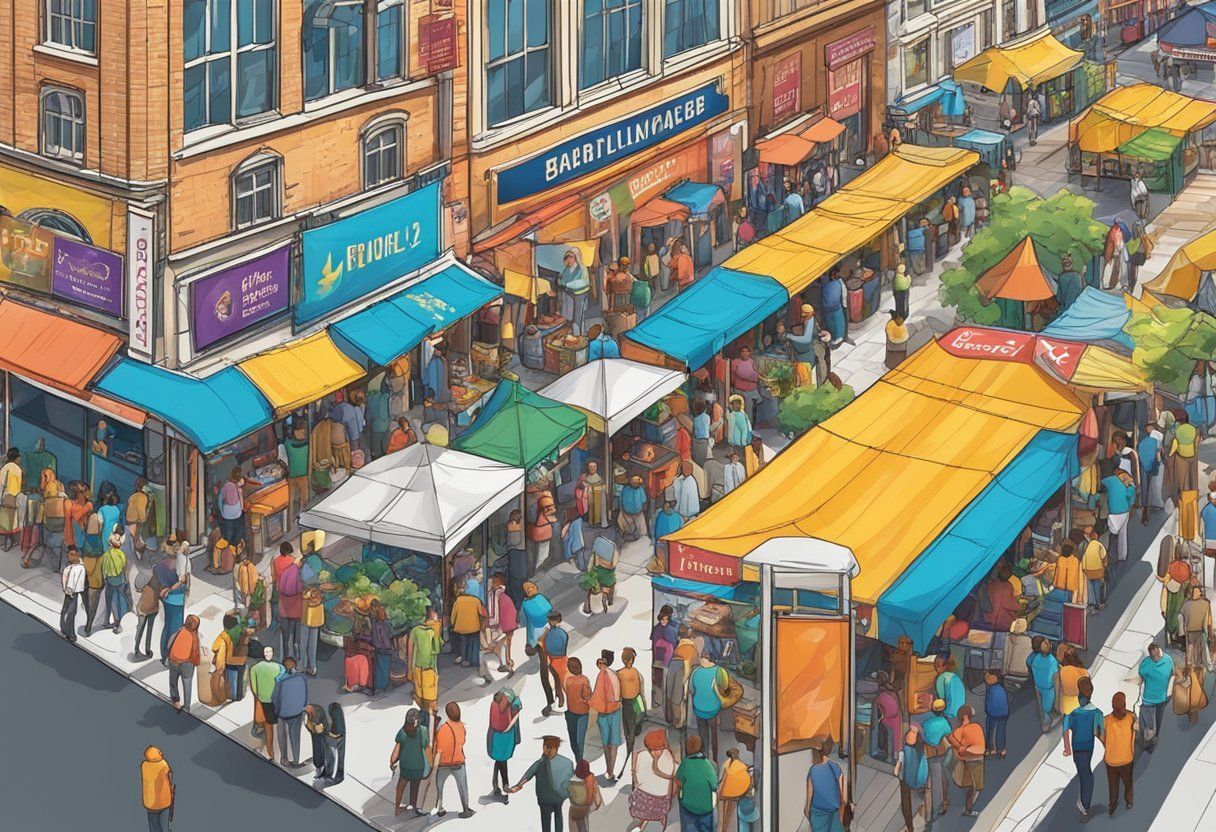
When it comes to promoting an event, signage and banners are some of the best ways to get the word out. Eye-catching banners and signs can grab the attention of potential attendees and create buzz around the event. However, creating effective signage and banners can be challenging, and it’s important to know how to maximize their impact.
One of the key factors in maximizing event exposure with banners and signage is to make sure they are visible and easy to read. This means choosing the right size and placement for your signage, as well as selecting fonts and colors that are easy to read from a distance. It’s also important to consider the messaging on your banners and signs, making sure that it’s clear and concise, and that it accurately reflects the event.
Another important aspect of maximizing event exposure with banners and signage is to use them strategically. This means identifying high-traffic areas where your banners and signs will be seen by the most people, as well as using them to create a cohesive branding experience throughout the event. By using banners and signage strategically, you can create a strong visual presence for your event and increase its overall impact.
Designing Impactful Banners for Events
When it comes to event marketing, banners and signage are some of the most effective ways to attract attention and promote your brand. However, designing impactful banners for events requires careful consideration of various design elements, including graphics, branding, messaging, colors, and fonts. In this section, we will explore some of the basics of banner design and provide tips for creating eye-catching banners that will maximize your event exposure.
Understanding the Basics of Banner Design
The first step in designing impactful banners for events is to understand the basics of banner design. A well-designed banner should be visually appealing, easy to read, and convey a clear message. Some of the key elements to consider when designing a banner include the size and shape of the banner, the placement of graphics and text, and the overall layout of the design.
Incorporating Branding and Messaging
One of the most important aspects of banner design is incorporating branding and messaging. Your banner should clearly communicate your brand message and values, and include your logo and brand colors. In addition, it should also feature a clear call to action that encourages attendees to engage with your brand.
Choosing the Right Colors and Fonts
Choosing the right colors and fonts is another critical aspect of banner design. Your banner should use a color palette that aligns with your brand colors and creates a cohesive look and feel. Similarly, your font choice should be easy to read and consistent with your branding. Using bold and italicized text can also help draw attention to important messaging.
In conclusion, designing impactful banners for events requires careful consideration of various design elements. By understanding the basics of banner design, incorporating branding and messaging, and choosing the right colors and fonts, you can create eye-catching banners that will help maximize your event exposure.
Strategic Placement for Maximum Visibility

When it comes to maximizing event exposure, strategic placement of banners and signage is crucial. By placing them in high-traffic areas, you can ensure that your message reaches the largest possible audience.
Identifying High-Traffic Areas
Before placing your banners and signage, it’s important to identify the high-traffic areas at your event. This could include entrances, exits, registration areas, and food and beverage stations. By placing your banners and signage in these areas, you can ensure that they are seen by the majority of attendees.
Considering Viewing Distance and Angle
In addition to identifying high-traffic areas, it’s important to consider the viewing distance and angle of your banners and signage. For example, if you’re placing a banner above a booth, you’ll want to ensure that it’s visible from a distance. Similarly, if you’re placing a sign on a table, you’ll want to make sure that it’s visible from all angles.
One way to ensure that your banners and signage are visible from a distance is to use bold, contrasting colors and large fonts. Additionally, you can use lighting to draw attention to your banners and signage, especially in dimly lit areas.
By strategically placing your banners and signage in high-traffic areas and considering viewing distance and angle, you can maximize your event exposure and ensure that your message reaches the largest possible audience.
Material and Size Considerations
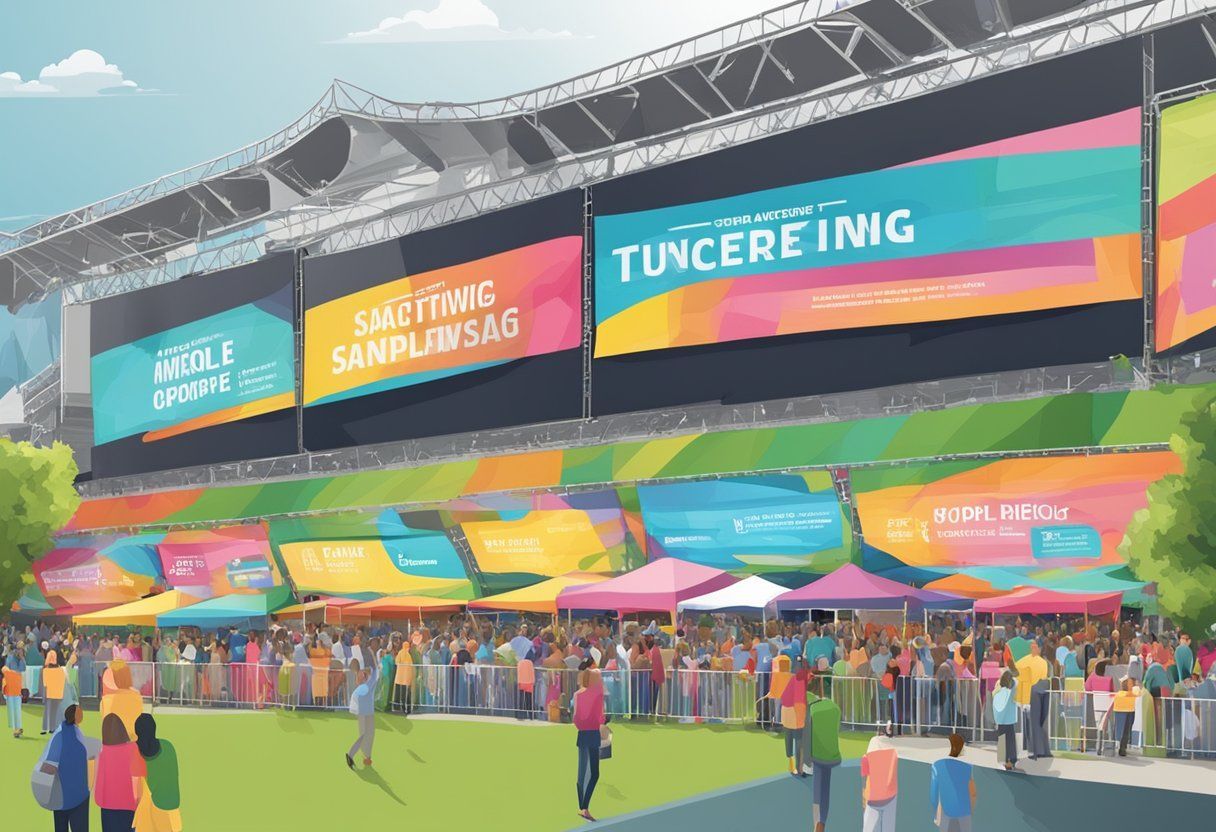
When it comes to creating eye-catching banners and signage for events, selecting the appropriate materials and size is crucial to ensure maximum exposure and longevity. In this section, we will discuss the different material options available and how to determine the appropriate size for your space.
Selecting Durable Materials for Longevity
Choosing high-quality materials is essential to ensure the longevity of your event banners and signage. Vinyl, fabric, and mesh are among the most popular materials used for event signage. Vinyl is a durable and cost-effective option that can withstand harsh weather conditions. Fabric, on the other hand, provides a more elegant and professional look and is ideal for indoor events. Mesh is a breathable material that is perfect for outdoor events, as it allows wind to pass through without damaging the banner.
When selecting materials, it is important to consider the lifespan of the banner. High-quality materials can last for years, while low-quality materials may only last for a few weeks. It is essential to invest in high-quality materials to ensure your event signage lasts as long as possible.
Determining the Appropriate Size for Your Space
Determining the appropriate size for your event banners and signage is crucial to ensure maximum exposure. The size of your banner will depend on the size of your event space and the distance from which it will be viewed. A banner that is too small may not be visible from a distance, while a banner that is too large may overwhelm the space and be difficult to read.
It is important to consider the placement of your banner when determining the appropriate size. If your banner will be hung above eye level, it may need to be larger to ensure it is visible from a distance. If your banner will be placed on a table or stand, it may need to be smaller to ensure it fits within the space.
In conclusion, selecting the appropriate materials and size for your event banners and signage is crucial to ensure maximum exposure and longevity. By investing in high-quality materials and determining the appropriate size for your space, you can create eye-catching signage that will attract attention and leave a lasting impression on your audience.
Leveraging Signage for Event Marketing
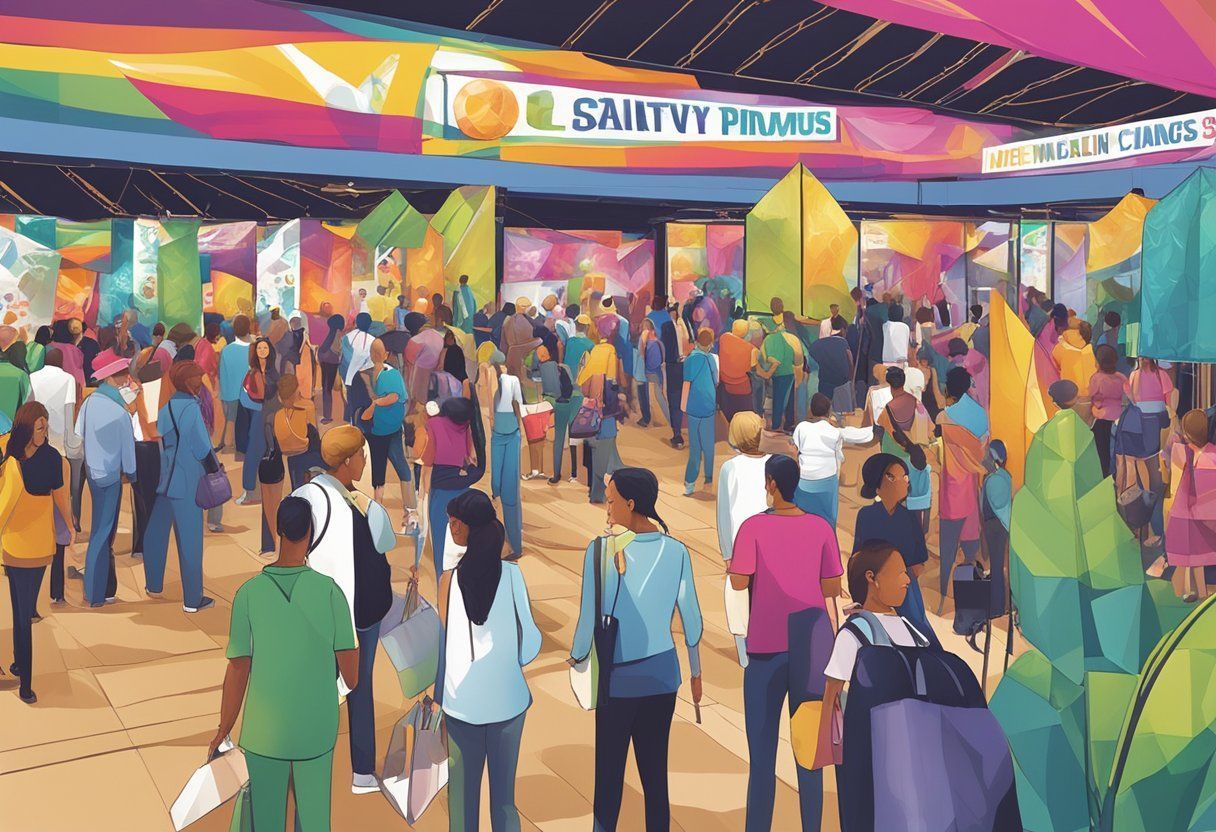
Signage is one of the most effective ways to promote an event and maximize exposure. From banners to posters, signage can be used to create a cohesive event marketing strategy that reinforces brand awareness and captures the attention of the target audience.
Creating a Cohesive Event Marketing Strategy
To create a cohesive event marketing strategy, it is important to consider the demographics of the target audience. By understanding their interests and preferences, event organizers can design signage that resonates with the audience and captures their attention.
In addition to demographics, event organizers should also consider the brand identity and messaging. Signage should be designed to reflect the brand identity and communicate the event messaging in a clear and concise manner. This helps to reinforce brand awareness and create a lasting impression on the audience.
To further enhance the event marketing strategy, signage can be integrated with social media. By including social media handles and hashtags on signage, event organizers can encourage attendees to share their experiences on social media, increasing the event’s online presence and reach.
Using Signage to Reinforce Brand Awareness
Signage is a powerful tool for reinforcing brand awareness. By using consistent branding and messaging across all signage, event organizers can create a strong brand presence that is easily recognizable to the target audience.
In addition to consistent branding, event organizers can also use signage to showcase the event’s sponsors and partners. This not only reinforces the event’s brand identity but also helps to build relationships with sponsors and partners.
To maximize exposure, signage should be strategically placed in high-traffic areas. This includes entrances, registration areas, and key event locations. By placing signage in these areas, event organizers can ensure that the target audience sees the signage and is reminded of the event messaging throughout the event.
In conclusion, leveraging signage is an effective way to maximize event exposure and reinforce brand awareness. By creating a cohesive event marketing strategy and using signage strategically, event organizers can capture the attention of the target audience and create a lasting impression.
Practical Aspects of Event Banners and Signage
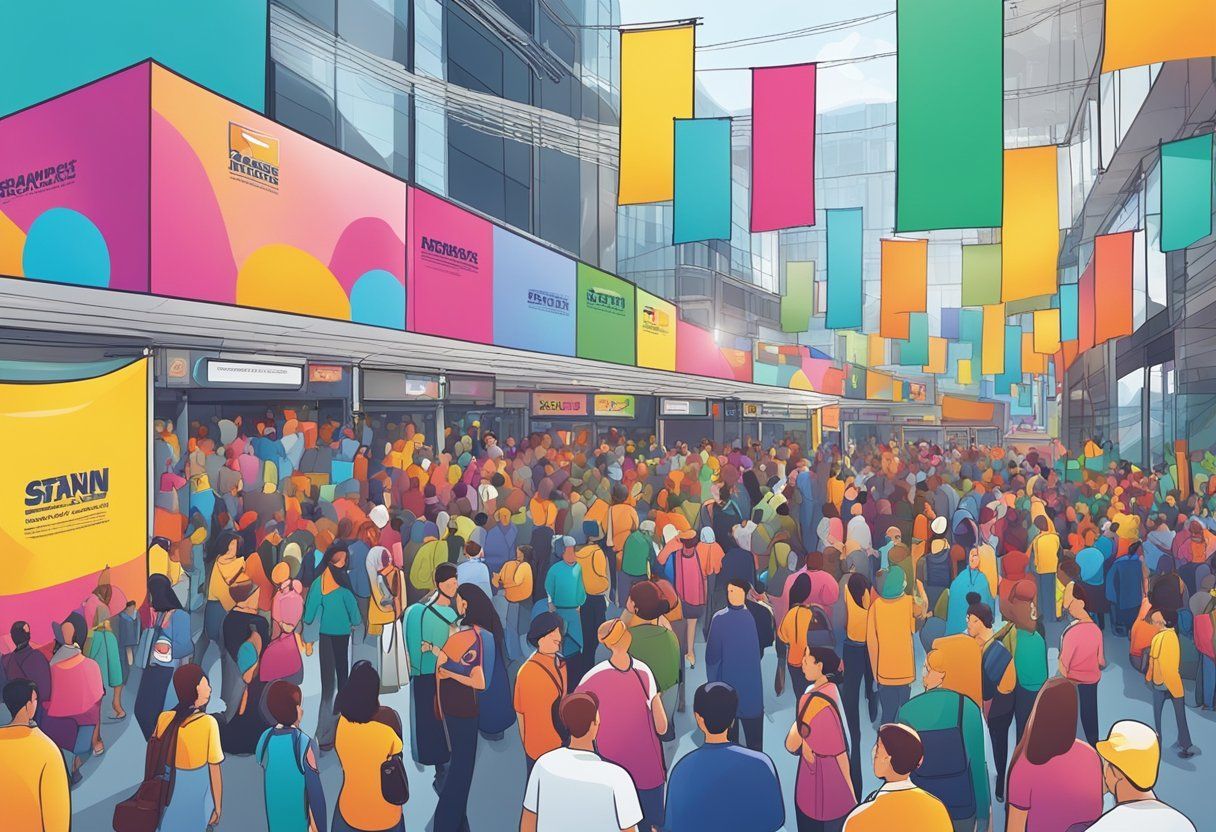
When it comes to maximizing event exposure, eye-catching banners and signage play a crucial role. However, it’s important to consider the practical aspects of these marketing tools, such as ease of transport and setup, and selecting signage suited for multiple events.
Ease of Transport and Setup
Transporting and setting up banners and signage can be a hassle, especially if they are bulky and heavy. Portable options such as retractable banners and pop-up displays can make the process much easier. These types of banners can be easily assembled and disassembled, and they come with a carrying case for convenient transport.
Another option to consider is a banner stand. These stands are lightweight and easy to assemble, and they come in a variety of sizes and shapes to fit different event spaces. They can also be easily transported in a carrying case.
Selecting Signage Suited for Multiple Events
If you plan on using your banners and signage for multiple events, it’s important to select options that are versatile and can be easily adapted to different settings. Retractable banners and pop-up displays are great options for this, as they can be adjusted in size and shape to fit different event spaces.
When selecting your signage, consider the type of event you will be attending and the audience you are targeting. A banner that is eye-catching and attention-grabbing may be more suited for a trade show, while a more subdued design may be more appropriate for a conference or seminar.
Overall, when it comes to maximizing event exposure with banners and signage, it’s important to consider the practical aspects of these marketing tools. By selecting options that are easy to transport and set up, and suited for multiple events, you can ensure that your brand is seen and remembered by attendees.
Frequently Asked Questions

What are the key elements to include in a trade show banner for maximum impact?
A trade show banner should have a clear and concise message that communicates the benefits of your product or service. It should also include eye-catching graphics and colors that grab the attention of attendees. Additionally, the banner should have a strong call to action that motivates attendees to visit your booth and learn more about your brand.
How can you ensure your event signage stands out in a crowded expo hall?
To make your event signage stand out in a crowded expo hall, you should use bold colors and large fonts that are easy to read from a distance. Incorporating unique shapes and designs can also help your signage stand out. Additionally, placing your signage in high-traffic areas and using lighting can increase visibility and draw attention to your brand.
What are some creative strategies for designing trade show graphics that attract attention?
Creative strategies for designing trade show graphics include using bold colors, incorporating unique shapes and designs, and using high-quality images that showcase your product or service. You can also use humor or clever wordplay to grab attendees’ attention and make your brand more memorable.
What information is crucial to display on signage to effectively communicate with event attendees?
Crucial information to display on event signage includes your company name, logo, and tagline, as well as a clear message that communicates the benefits of your product or service. It’s also important to include your booth number and any special promotions or discounts you’re offering to attendees.
How can you leverage banner placement for optimal visibility at an event?
To leverage banner placement for optimal visibility at an event, you should place your banners in high-traffic areas such as near the entrance or in the center of the expo hall. You can also use multiple banners strategically placed throughout the venue to create a cohesive branding experience for attendees.
What are the best practices for integrating branding into event banners and signs?
Best practices for integrating branding into event banners and signs include using consistent colors, fonts, and imagery that align with your brand’s visual identity. It’s also important to ensure that your messaging is clear and consistent across all signage. Finally, incorporating your logo and tagline prominently on all signage can help reinforce your brand’s identity and increase brand recognition among attendees.…
